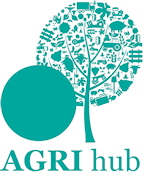Crop establishment and growth have been put under intense strain during the current growing season, so what can farmers do to improve matters?
Research has shown that just throwing nitrogen at a crop is not the solution, with farmers focusing more on long-term soil structure, organic matter and micronutrients. However, this year the weather has conspired against growers’ best efforts; from the wet autumn to winter flooding and the April heatwave. Crops and ground conditions have been tested, but there are always positive steps growers can take to rectify problem areas – and Cereals LIVE will be offering the latest expert research and advice.
“Whether farmers are after nutritional information, drainage advice or to learn how to utilise precision tools to improve their soil health, Cereals LIVE aims to help,” says Alli McEntyre, event director.
The Young Farmers and Sustainability theatre will include seminar sessions on soil health and climate change management, and there will be plenty of experts on hand at the NIAB Soil Pit and individual exhibitor microsites, with live web chat available.
So what are the key issues on farmers’ minds right now? After the wet winter and dry spring, there is a lot of variability in growth stages, plant populations and rooting depth, explains Paul Newell Price, principal soil scientist at ADAS. “There are a lot of very patchy crops, and with soil nitrogen supply particularly low this year, farmers may be tempted to apply more nitrogen than usual. Splitting nutrient applications may have paid off given the exceptionally dry spring.”
Crops which have suffered stress from the dry spring may struggle to obtain the nutrients they need from the soil, so giving a much-needed boost in the form of biostimulants could help them to fulfil their potential, says Chris Gamble at Olmix Micromix. “Growers should consider using bioactives on spring crops which have experienced climatic stress. L-amino acids and algal extracts relieve plant stress and enhance roots, improving their ability to utilise nutrients.”
Mr Gamble also advises getting the micronutrient requirements of the crop right, as this will improve its response to both biostimulants and fungicides. “This will improve the plant’s ability to metabolise nutrients and grow away.”
Given the difficult conditions, this is probably not the year to be pushing yields, suggests Mr Newell Price, but it will be vital to assess soils for compaction post-harvest. “It’s important to check soil nutrient reserves as normal – prioritising land that has been flooded.”
With soil structure in mind, NIAB’s Soil Pit will be delivered via online videos at Cereals LIVE, enabling visitors to compare rooting across winter oilseed rape (conventional, hybrid and semi-dwarf), cereal hybrids and herbal leys. They can also consider spring crop alternatives to winter oilseed rape and view a companion cropping demo.
Many farmers suffered extensive flood damage in the early part of the year and are still feeling the repercussions now. Professor Dick Godwin at Harper Adams University suggests that growers assess their drainage and identify how to improve it, starting with whether farm drains are working. “If you have old drainage plans walk the ditch drains and check for blockages.”
In the short-term farmers could also install temporary mole, ditch or furrow drains where appropriate. “Map the damaged areas now for repair later in the year,” advises Prof Godwin. “Then in the longer-term plan to install pipe or ditch drains, subsoil compacted areas and improve soil organic matter, among other things.”
Precision farming can help farmers to improve soil health, by minimising compaction and categorising which parts of a field are more productive or would benefit from additional nutrients, explains Michael Haverty at the Andersons Centre. The firm has considered the financial and operational impacts of precision farming on its Loam Farm model, and will be revealing the results at Cereals LIVE.
There is a danger that too much precision technology could become a distraction, rather than an informative tool on soil and nutrition, he warns. “The key for farmers is to know what value a tool generates.”
GPS and autosteer are commonly used to improve soils, actioning the insights gained by field mapping. “Soil mapping is key: It can highlight where there are imbalances or deficiencies and inform on decisions for variable rate applications, or how intensively you seed,” says Mr Haverty.
“The economics of soils are down to being able to measure and visualise what it needs. Precision farming is going to move on and farmers will be able to do more with the same operating system in the future.”
Box
For the first time ever, the Cereals Event is going online to support the industry amid the Covid-19 pandemic, with existing exhibitors and sponsors involved for free as their fees roll over to 2021. Cereals LIVE 2020 will be held online on 10-11 June 2020. For more information and to register visit www.cerealsevent.co.uk.




